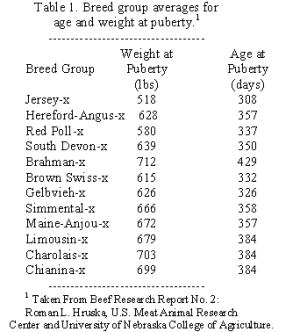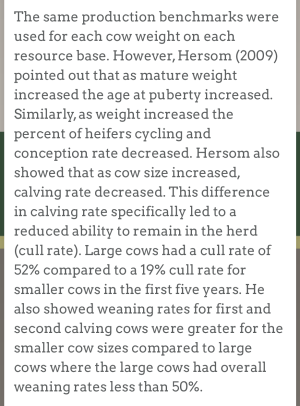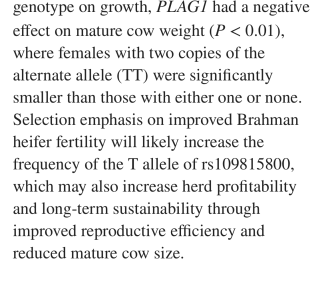RMC said "Size and fertility are linked . The larger the cow the later cycling and reduced fertility occur."
Totally disagree.
NUTRITION has more to do with early cycling and fertility than any thing else.
RMC - good point. WHERE IS YOUR AREA????
All this discussion has more to do with LOCATION than anything else. Size of cattle has to FIT THE ENVIRONMENT! My cows are BIG - not tall - just big all over. They do NOT get GRAIN. They get grass and hay. I keep two 60 day breeding seasons. Was 100% AI for 30+ years. Now, for "convenience" (vacation), I AI 38 days and turn bull out for 30 days.
I can't compare profit of my heifers, that wouldn't be fair.
But, my steers (finished on grain or weaned 3 weeks) will make me more
profit than 2 (maybe 3) of your little cows. IT IS LOCATION LOCATION LOCATION. As good as my cows are, they would not be as fertile, easy keeping or anything else they perform for me - if they were starved. I utilitize the good growing native grasses I have with rotational grazing.
Your research you keep talking about was strictly for INTER-MOUNTAIN cow/calf operations. Stick to your location and quit trying to tell everyone what is good for THEM in THEIR LOCATION.
Funny thing, my heifer calves are rather big - can you believe they cycle early enough that I have to worry about their male in-tact siblings breeding them??? Will wonders never cease???
Just a little fact check for some of you. Simmental breed is earlier maturing than Herefords. Herefords are one of the oldest to reach sexual maturity. Jersey is youngest! Brahmans are the oldest! This is an old chart from MARC and they are crosses - but you get the point.
View attachment 37201




